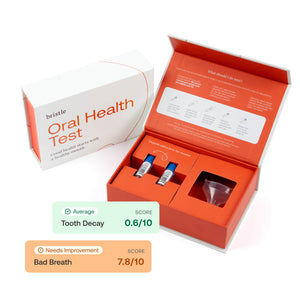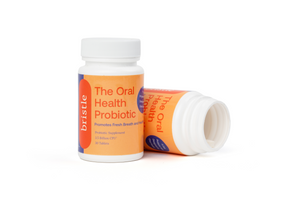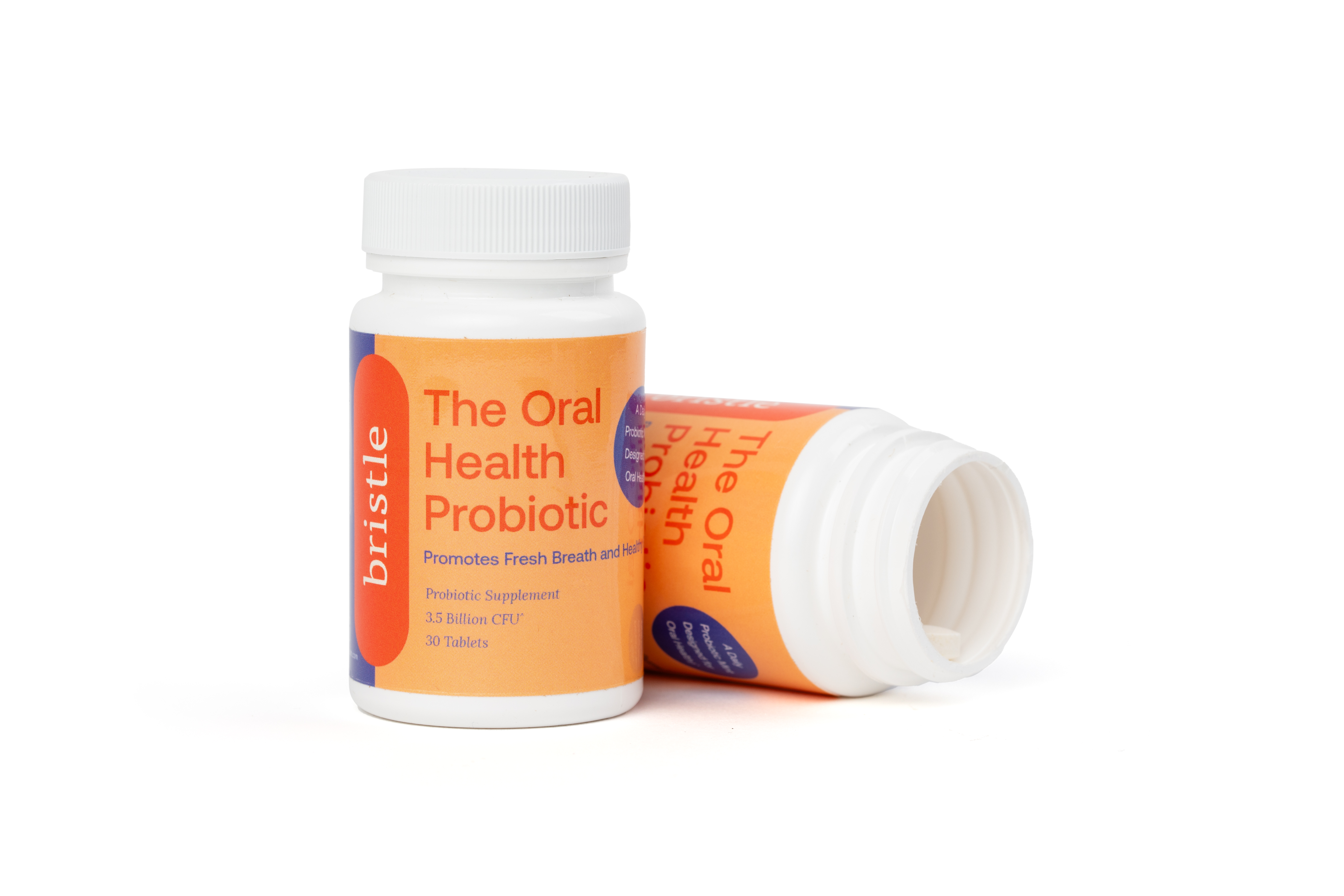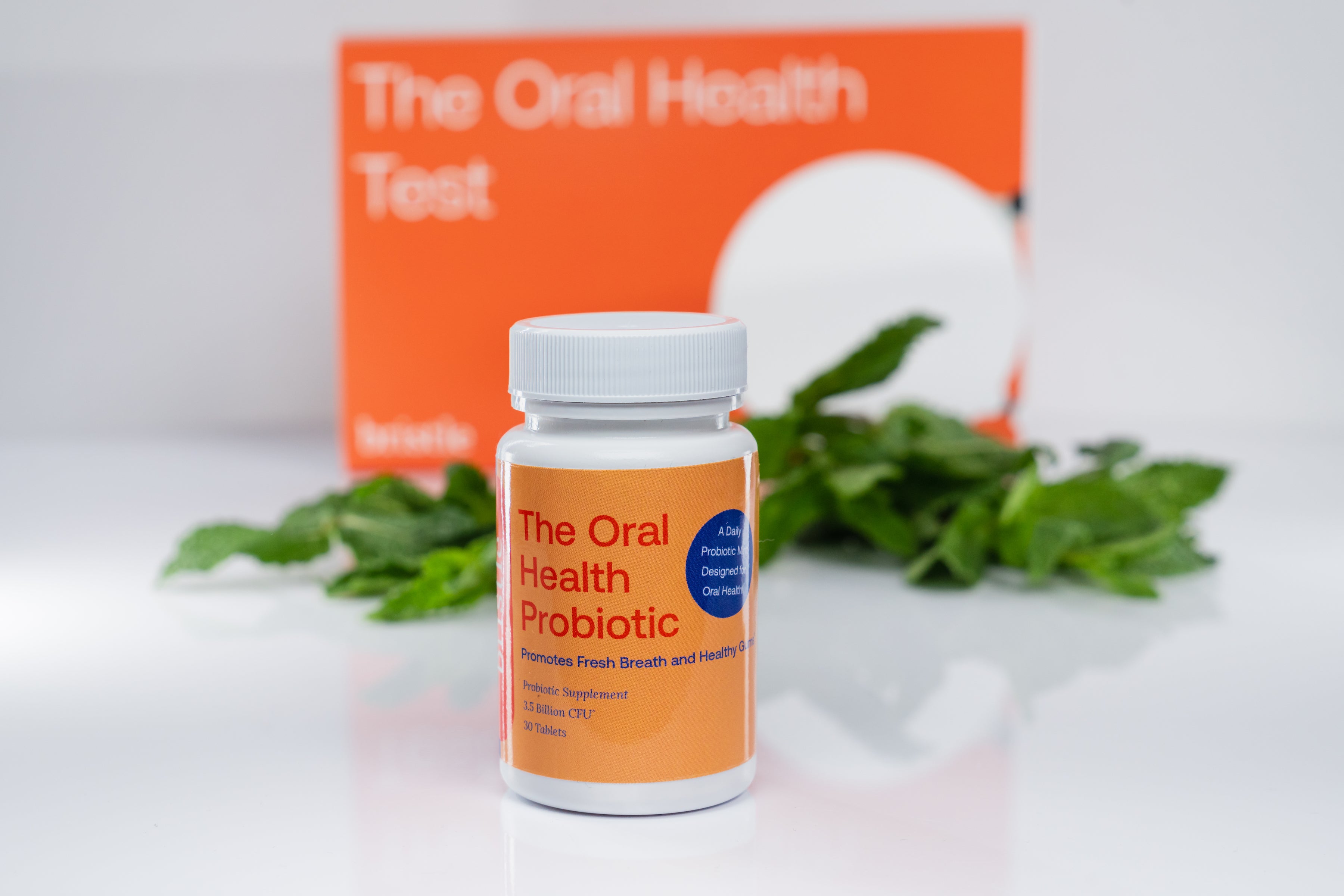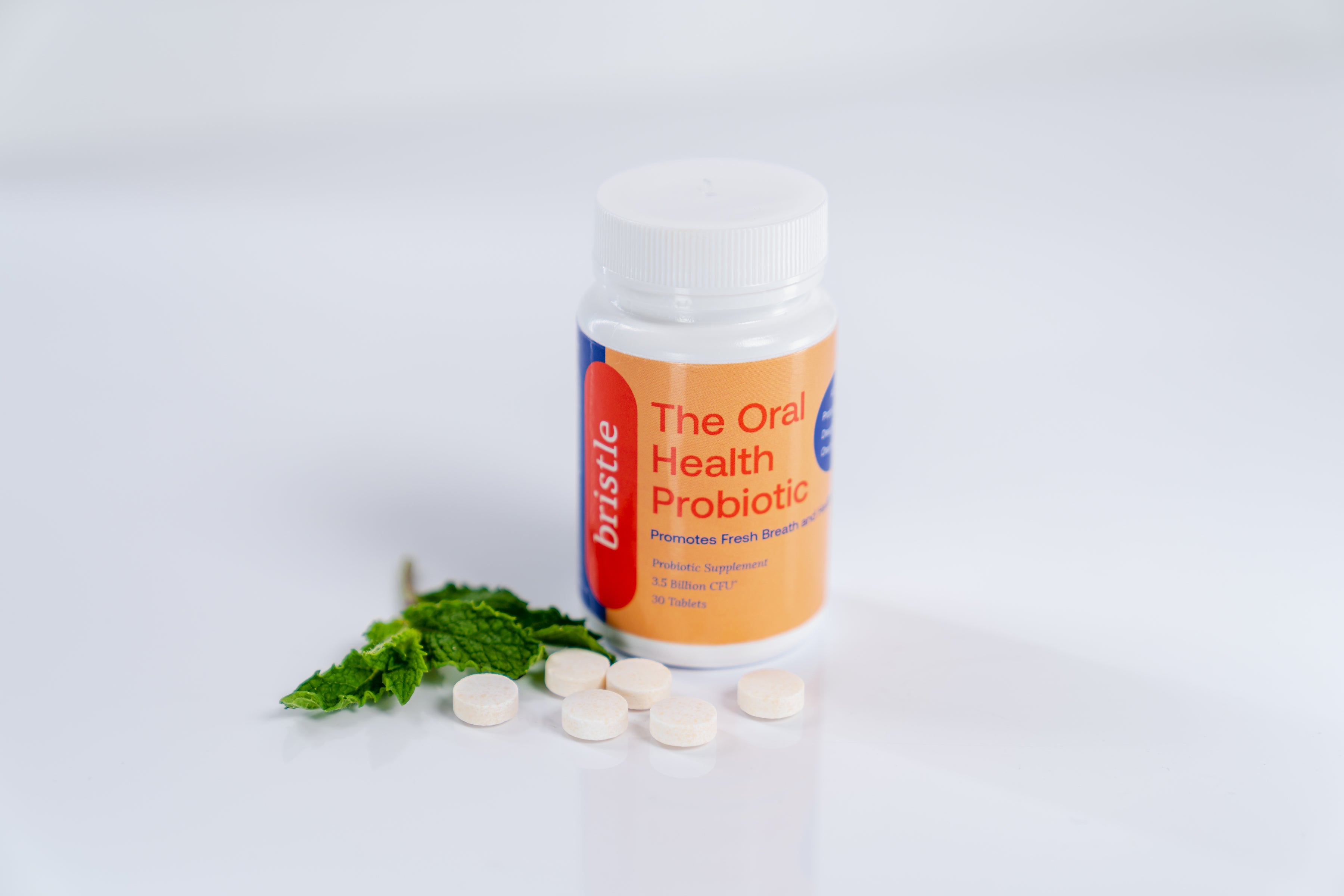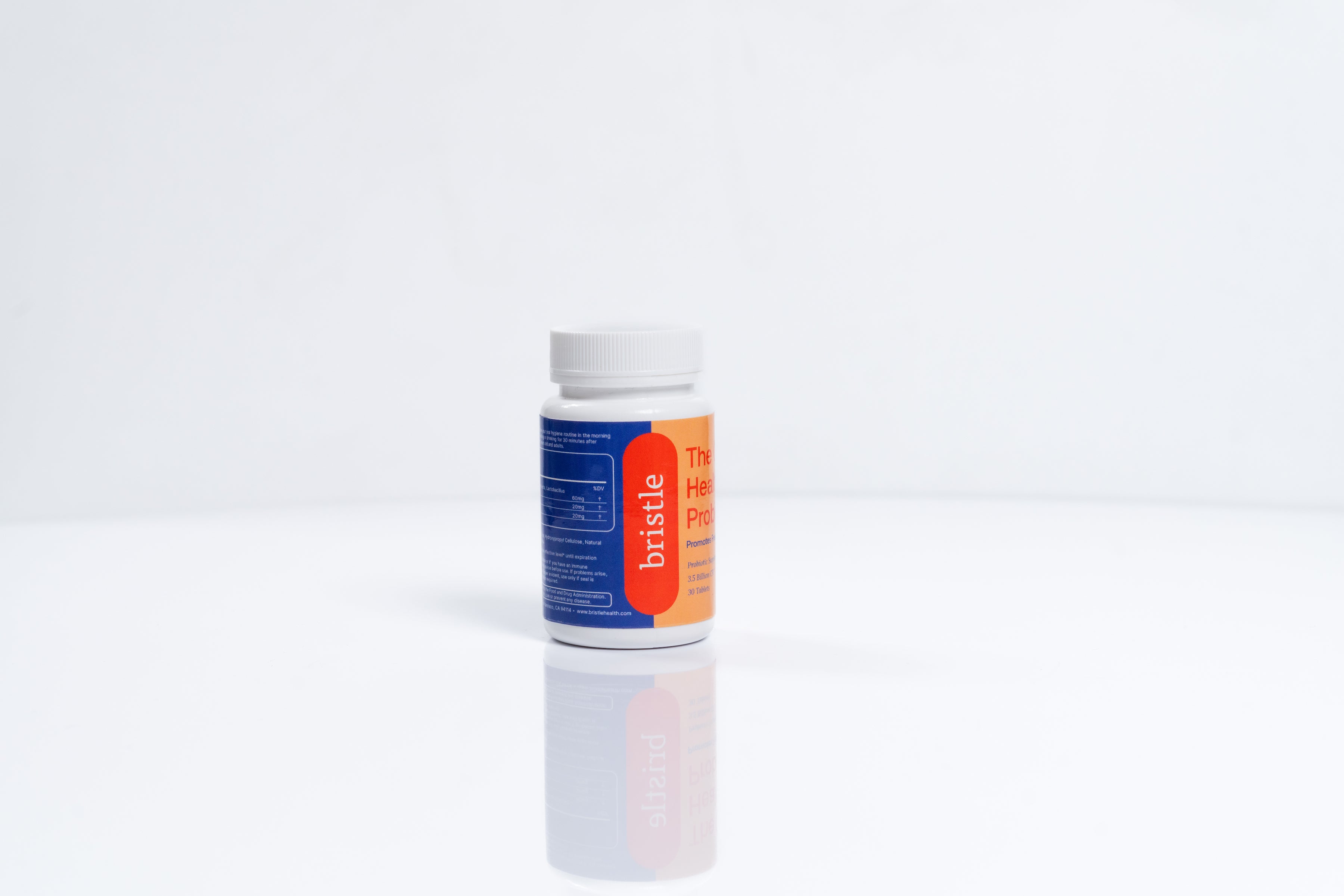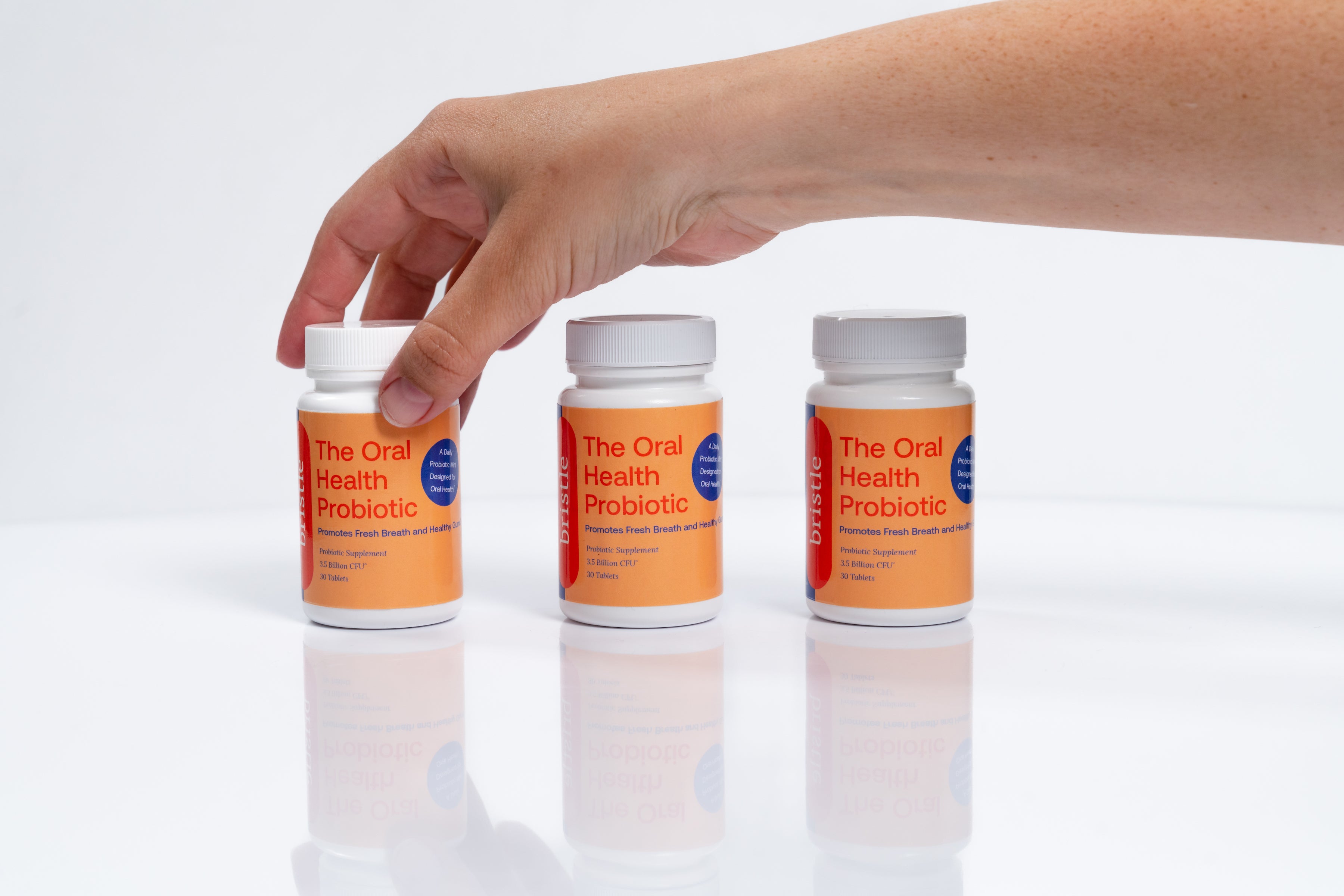The oral microbiome is a community of microorganisms that live in the oral cavity, on your teeth, gums, tongue, and throughout the mouth.
For decades, research has shown a causal relationship between these microbes and the incidence and progression of oral disease such as gum disease, cavities, and oral thrush. More recent studies have shown that microbes in the oral microbiome are also associated with overall health. For instance, Porphyromonas gingivalis, a periodontal pathogen, has been linked to progression of Alzheimer’s disease. In another example, Fusobacterium nucleatum, a common oral bacteria, has been linked to progression of inflammatory bowel disease and colorectal cancer. You can read more about how oral bacteria influence overall health at our blog here.
While most research has shown how members of the oral microbiome can promote disease, recent studies have also shown that these microbes are critical to promoting optimal health. In this review, we’ll discuss the importance of the oral microbiome and how microbes in the mouth can improve cardiovascular and cognitive health through nitrate reduction and increasing nitric oxide. We will cover the research demonstrating the role of the oral microbiome in nitric oxide production.
What is nitric oxide?
Nitric oxide is a gas that plays a crucial role in multiple biological processes including immunity, cardiovascular health, and cognitive health (1). Nitric oxide promotes vasodilation, which helps maintain and regulate blood pressure. People with low levels of nitric oxide are more likely to have hypertension (2).
Nitric oxide is also an important antimicrobial molecule that protects against pathogens. Macrophages, T-cells, and dendritic cells, are among many immune cell types that create nitric oxide in response to infection. Nitric oxide at high concentrations can kill pathogenic microbes.
How does the oral microbiome affect nitric oxide levels?
While nitric oxide is derived from a variety of places, a major source of nitric oxide production is the oral cavity. Recent studies have shown that nitric oxide can be produced by bacteria in the oral cavity (3). This mechanism for nitric oxide production is referred to as the enterosalivary nitrate reduction pathway. Bacteria in the oral microbiome can reduce nitrate to nitrite, and also nitrite to nitric oxide (4). These reduced forms of nitrate made by bacteria in the oral microbiome are produced by specific nitrate reducing species such as Veillonella, Actinomyces, Rothia, and Haemophilus species. This form of reduced nitrate readily diffuses into circulation, is bioavailable, and is correlated with levels of circulating nitric oxide in blood.
Microbes in the oral microbiome are capable of reducing nitrate to nitrite and further to nitric oxide. Below is a summary of the research that demonstrates an important role of the oral microbiome in nitric oxide and cardiac health. TLDR: numerous studies now show the importance of maintaining the oral microbiome and its role in nitric oxide production.
Summary of oral microbiome research as it relates to nitric oxide
In 2021, a study of 96 participants looked at the oral microbiomes from people with hypertension compared to normotensive individuals. They found that people with hypertension had distinct oral microbiome dysbiosis, with Actinobacteria, Prevotella, and Veillonella species being positively correlated with high blood pressure.
In 2019, a study of 139 participants with sleep apnea were assessed for hypertension, and had their microbiomes analyzed by qPCR. Sleep apnea is a risk factor for hypertension. They found that people with sleep apnea have significantly higher levels of Porphyromonas and Aggregatibacter, two species that are a hallmark of oral dysbiosis.
In 2019, another study looked at immune markers of periodontal pathogens in patients with hypertension. They found that Campylobacter rectus, Veillonella parvula, and Prevotella melaninogenica were significantly correlated with high blood pressure.
In 2021, a study of 48 participants showed that normotensive subjects had significantly higher levels of nitric oxide and bacterial concentrations in saliva. Microbiome analysis revealed that normotensive subjects had higher levels of Neisseria species in their oral microbiome.
In 2022, a study looked at the oral microbiomes of 1,215 postmenopausal women with or without hypertension. Authors found that oral bacteria were distinct between normotensive and hypertensive participants. Importantly, Treponema socranskii was significantly associated with hypertension. By contrast, Rothia aeria, Streptococcus sanguinis, and Neisseria subflava were significantly associated with normal blood pressure.
Mouthwash can be harmful to the oral microbiome and nitric oxide
Multiple clinical studies have now demonstrated that constant use of antimicrobial mouthwash is a risk factor for hypertension. The research now suggests that routine use of alcohol based mouthwash can be harmful to the nitrate reducing microbes, and lead to hypertension.
Summary of oral microbiome research as it relates to hypertension
In 2015, one study showed that antimicrobial mouthwash use led to increased blood pressure and reduced levels of salivary and blood nitrite (5). In 2016, a follow up study in normotensive individuals found similar results across multiple types of antimicrobial mouthwash containing chlorhexidine, cepacol, or alcohol (6).
Then in 2020, a separate study was published across over 1000 participants demonstrating that people who use mouthwash twice per day had an increased risk of hypertension compared to people who used it once per day or not at all (7).
In 2021, a mechanistic study found that antiseptic mouthwash inhibited the production of nitrite and nitric oxide, and reduced the efficacy of L-arginine anti hypertension supplementation (8).
In 2021, a meta-analysis revealed that chlorhexidine mouthwash shifted the oral microbiome toward lower diversity, reduced levels of nitrate reducing species, and altered nitrite levels in both saliva and plasma.
How can you increase nitric oxide?
Specific species in the oral microbiome are responsible for nitrate reduction. For example, Haemophilus, Neisseria, Actinomyces, Rothia, and Veillonella species, among others, have been shown to play a role in the enterosalivary nitrate cycle in some capacity. Here are a few things that have been shown to increase salivary and plasma nitric oxide:
- Increase nitrate intake via diet. Diet is a powerful way to increase nitric oxide in the body. Not only does increased nitrate help to improve nitric oxide levels, it can also significantly improve the oral microbiome (9).
- Avoid long term use of broad antiseptic mouthwash. As we described above, multiple studies have now shown that some mouthwashes are extremely harmful to the species that reduce nitrate, and constant use of these broad antiseptic mouthwashes are associated with hypertension, dysbiotic oral microbiomes, and reduced nitric oxide levels.
- Avoid mouth breathing. Mouth breathing can reduce salivary flow rate, which is critical to the oral microbiome. People with dry mouth are more likely to have cavities, gum disease, and reduced levels of nitric oxide. Nasal breathing significantly increases levels of nitric oxide compared to mouth breathing (10, 11).
Concluding thoughts
The oral microbiome is a critical component of cardiovascular health, especially through its ability to reduce nitrate to nitrite and increase levels of nitric oxide. Specific species are responsible for the conversion of nitrate to nitrite, and these species are generally lost after long-term use of antimicrobial mouthrinse.

